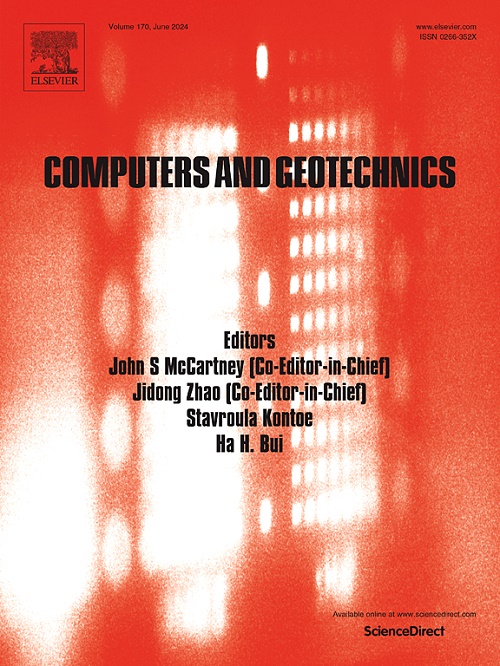Machine Learning-guided Observational Method for Prediction of Preloading-induced Consolidation Settlement
IF 6.2
1区 工程技术
Q1 COMPUTER SCIENCE, INTERDISCIPLINARY APPLICATIONS
引用次数: 0
Abstract
The Asaoka’s method, established in the late 1970 s and based on an assumption of one-dimensional (1D) consolidation, has been used worldwide for prediction of reclamation-induced consolidation settlement with the aid of field monitoring data. In the last several decades, the state of the practice in geotechnical engineering has advanced significantly. For example, numerical modeling (e.g., 2D finite element method, FEM) is now commonly used for geotechnical analysis and design of reclamations. The 1D consolidation assumption in the Asaoka’s method is not compatible with 2D FEM analysis for predicting consolidation settlement and its variation in a 2D spatial domain. To tackle this challenge, this study proposes a machine learning-guided observational method for improving prediction of consolidation settlement from 2D FEM models using field monitoring data. It uses random FEM to incorporate various uncertainties and generate many sets of FEM analysis outcomes (e.g., time-varying settlement in a 2D space). Then, these outcomes are adopted as basis functions, or dictionary atoms, under a sparse dictionary learning (SDL) framework and used together with the field monitoring data sequentially acquired to continuously improve predictions of consolidation settlement. A ground improvement project using combined vacuum and surcharge preloading is adopted to illustrate the efficacy of the proposed approach.
基于机器学习的预压固结沉降预测观测方法
Asaoka的方法建立于20世纪70年代末,基于一维固结假设,已在世界范围内应用于借助现场监测数据预测开垦引起的固结沉降。在过去的几十年里,岩土工程的实践状态有了显著的进步。例如,数值模拟(例如,二维有限元法,FEM)现在通常用于土工分析和填海工程设计。Asaoka方法中的一维固结假设与二维有限元分析在二维空间域预测固结沉降及其变化是不兼容的。为了解决这一挑战,本研究提出了一种机器学习指导的观测方法,用于利用现场监测数据改进二维有限元模型的固结沉降预测。它采用随机有限元法将各种不确定性因素纳入其中,生成多组有限元分析结果(如二维空间中的时变沉降)。然后,将这些结果作为稀疏字典学习(SDL)框架下的基函数或字典原子,与依次获取的现场监测数据一起使用,不断改进固结沉降预测。最后,以真空与堆载联合预压地基改善工程为例,说明了该方法的有效性。
本文章由计算机程序翻译,如有差异,请以英文原文为准。
求助全文
约1分钟内获得全文
求助全文
来源期刊

Computers and Geotechnics
地学-地球科学综合
CiteScore
9.10
自引率
15.10%
发文量
438
审稿时长
45 days
期刊介绍:
The use of computers is firmly established in geotechnical engineering and continues to grow rapidly in both engineering practice and academe. The development of advanced numerical techniques and constitutive modeling, in conjunction with rapid developments in computer hardware, enables problems to be tackled that were unthinkable even a few years ago. Computers and Geotechnics provides an up-to-date reference for engineers and researchers engaged in computer aided analysis and research in geotechnical engineering. The journal is intended for an expeditious dissemination of advanced computer applications across a broad range of geotechnical topics. Contributions on advances in numerical algorithms, computer implementation of new constitutive models and probabilistic methods are especially encouraged.
 求助内容:
求助内容: 应助结果提醒方式:
应助结果提醒方式:


